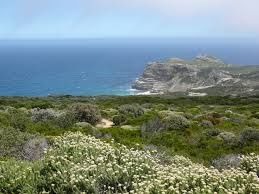The project took place in the Cape of Good Hope national park that is in the Cape Floristic Region in South Africa. The project was aimed at protecting the fynbos of the natural park and eliminated the Acacia Saligna from the National Park, where it alters the fire regime that the plants in the fynbos depend upon every year. The event took place near one of the lakes that support all sorts of aquatic life and are dependent upon the natural vegetation for their migration during the wet season. Also, the project was more important because Cape Town is in the middle of a massive drought and the alien invasive Saligna uses more water than the native plant, which in turn limits the amount of water that reaches the rivers and reservoirs. The project used manual labor and chainsaws to cut down the Saligna and then to dig out the roots and seeds so that it could not resprout the following year.
Cape Town may be the first major city in the world forced to evacuate because of a drought, so removing the invasive plants is an important step in allowing water to enter the rivers and reservoirs of the area. These alien invasive plants can use up to 50 liters of water per day and is not something Cape Town can afford. The removal of the Saligna will allow the native plants to get the water use that they need as well, and since not as much water is used by the native plants, more water can reach the rivers and reservoirs. Another goal for the project was to get more women from Cape Town involved. Working for Water has a target of 60% women to get involved nationwide and this project emphasized women employees because Cape Town remains extremely racially divided. Most of the people without jobs there are black so getting black women into the workforce allows there to be more revenue across racial lines as well as allowing them to learn important skills.
Sources:
https://www.environment.gov.za/projectsprogrammes/wfw

